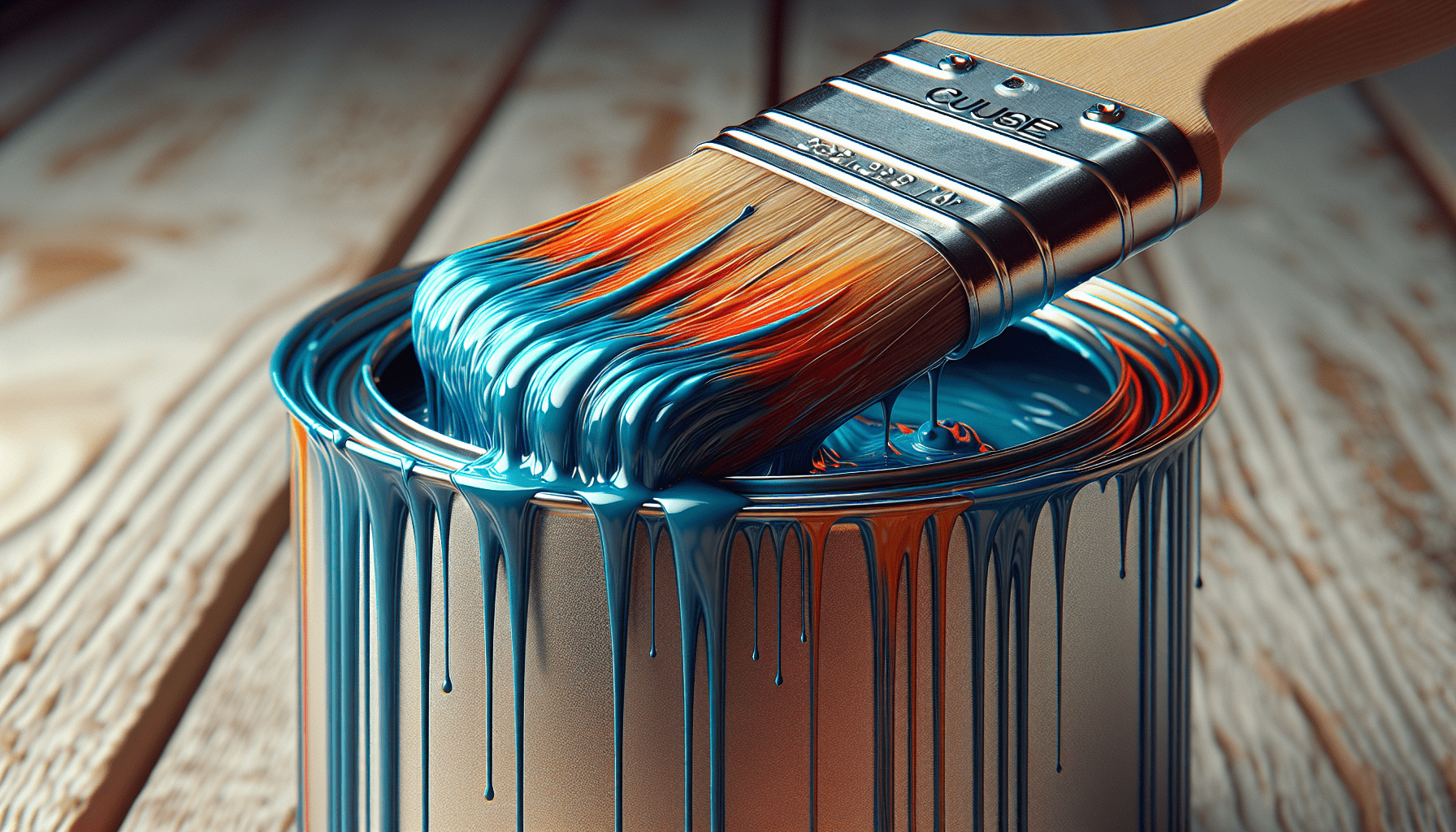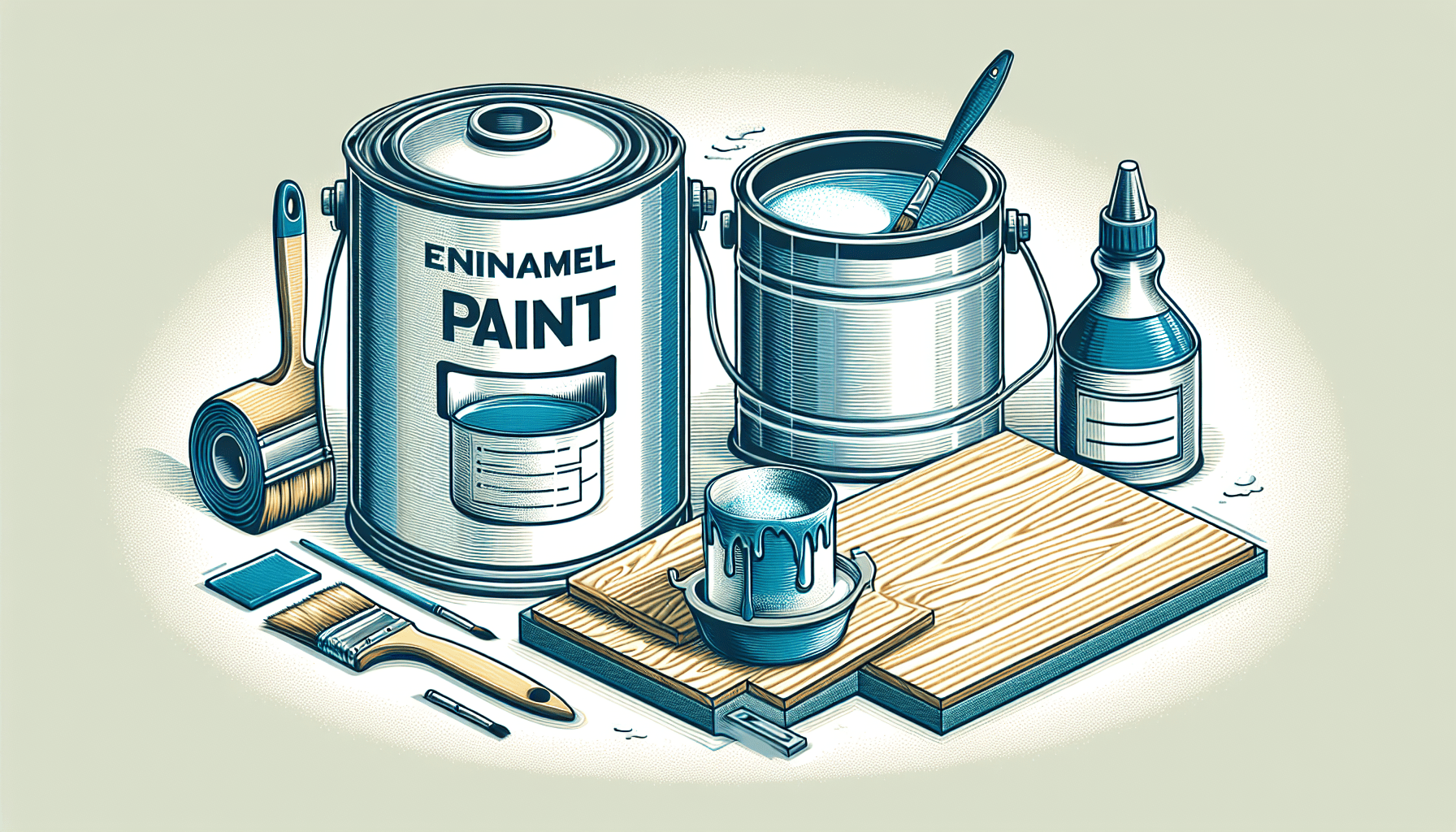Enamel paint and acrylic paint may seem similar at first glance, with their vibrant colors and glossy finishes. However, their differences lie in their chemical composition and application. Enamel paint, known for its durability and smoothness, is oil-based and takes longer to dry. On the other hand, acrylic paint is water-based and dries quickly, allowing for easy layering and blending. Understanding the distinctions between these two types of paint is crucial for artists, DIY enthusiasts, and professionals alike, as it determines their suitability for different projects and surfaces. In this article, we will explore the key disparities between enamel paint and acrylic paint, shedding light on their unique characteristics and aiding in informed decision-making.
Definition of Enamel Paint
Enamel paint is a type of paint that is known for its hard, glossy finish. It is created by combining pigment with a solvent-based resin, typically alkyd or oil-based. The resulting mixture forms a durable coating that is resistant to wear, moisture, and chemicals. Enamel paint is commonly used for applications that require a high level of durability, such as automotive finishes and household appliances.
Composition
Enamel paint is composed of pigment and a solvent-based resin, which acts as the binder. The pigment provides the color and opacity, while the resin binds the pigment particles together and forms a protective layer when the paint dries. The resin used in enamel paint is typically alkyd or oil-based, giving it its characteristic glossy finish.
Appearance
Enamel paint is known for its smooth and glossy appearance. When applied correctly, it creates a high-shine, reflective surface that enhances the depth and richness of the color. The glossy finish of enamel paint also helps to reflect light, giving the painted surface a vibrant and polished look.
Durability
One of the key advantages of enamel paint is its exceptional durability. The solvent-based resin in enamel paint forms a hard and protective coating that is resistant to scratches, abrasion, and impact. This makes it suitable for applications that require a long-lasting finish, such as automotive exteriors, metal surfaces, and high-traffic areas.
Application
Enamel paint can be applied using various methods, including brush, roller, or spray. It is important to prepare the surface properly before applying enamel paint to ensure proper adhesion and longevity of the finish. Depending on the specific application, enamel paint may require multiple coats to achieve the desired color and coverage.
Curing Process
The curing process of enamel paint involves the evaporation of the solvent and the chemical reaction between the resin and oxygen in the air. As the solvent evaporates, the paint dries and forms a hard, protective film. The curing process may take several days to complete, depending on factors such as temperature and humidity.
Definition of Acrylic Paint
Acrylic paint is a water-based paint that consists of pigment particles suspended in an acrylic polymer emulsion. It is a versatile type of paint that offers a wide range of colors and finishes. Acrylic paint is popular among artists and craftsmen for its quick drying time, ease of use, and flexibility.
Composition
Acrylic paint is composed of pigment particles and an acrylic polymer emulsion. The pigment provides the color and opacity, while the acrylic polymer emulsion acts as the binder and vehicle for the pigment. The emulsion is made by combining acrylic resin with water, which forms a stable suspension that can be easily applied to a variety of surfaces.
Appearance
Acrylic paint is known for its versatility and wide range of finishes. It can be applied thinly to create a transparent and watercolor-like effect, or layered for a more opaque and vibrant finish. Acrylic paint dries to a matte or satin sheen, depending on the specific formulation. It can also be mixed with various mediums to achieve different textures and effects.
Durability
While acrylic paint is not as durable as enamel paint, it still offers a good level of durability for most applications. Once dry, acrylic paint forms a flexible and waterproof film that is resistant to fading, cracking, and peeling. However, it may not hold up as well as enamel paint in high-traffic areas or on surfaces that are frequently exposed to harsh conditions.
Application
Acrylic paint can be applied using a brush, palette knife, or even sprayed with an airbrush. It can be thinned with water for a more transparent application, or used straight out of the tube for a more opaque finish. Acrylic paint adheres well to a variety of surfaces, including canvas, paper, wood, and plastic. It also dries quickly, allowing for multiple layers or revisions to be made in a relatively short amount of time.
Curing Process
The curing process of acrylic paint involves the evaporation of water from the emulsion and the chemical bonding of the acrylic particles. As the water evaporates, the paint dries and forms a flexible film. Acrylic paint usually dries to the touch within 20-30 minutes, but complete curing may take up to several days, depending on the thickness of the paint and environmental conditions.
Composition
Enamel paint is primarily composed of pigment and a solvent-based resin, typically alkyd or oil-based. The pigment provides the color and opacity, while the resin acts as the binder and protective film-former. On the other hand, acrylic paint consists of pigment particles suspended in an acrylic polymer emulsion. The acrylic polymer emulsion acts as the binder and vehicle for the pigment, which allows the paint to be easily applied and adhere to various surfaces.
Appearance
Enamel paint is known for its smooth and glossy appearance. The glossy finish reflects light and enhances the richness and depth of the color. On the other hand, acrylic paint generally dries to a matte or satin sheen, although it can be mixed with mediums to create different finishes. Acrylic paint’s versatility allows for a wide range of visual effects, from transparent washes to opaque layers.
Durability
Enamel paint is highly durable and resistant to wear, moisture, and chemicals. Its solvent-based resin forms a hard and protective coating that can withstand scratches, abrasion, and impact. This makes it suitable for applications that require long-lasting durability, such as automotive finishes and household appliances. Acrylic paint, while not as durable as enamel paint, still offers good durability for most applications. Once dry, acrylic paint forms a flexible and waterproof film that is resistant to fading, cracking, and peeling.
Application
Enamel paint can be applied using a brush, roller, or spray. Proper surface preparation is crucial to ensure good adhesion and longevity of the finish. Multiple coats may be required to achieve the desired color and coverage. Acrylic paint can also be applied using various methods, including brush, palette knife, or airbrush. It can be thinned with water for a more transparent application or used straight out of the tube for a more opaque finish. Acrylic paint adheres well to a variety of surfaces and dries quickly, allowing for multiple layers or revisions to be made in a relatively short amount of time.
Curing Process
The curing process of enamel paint involves the evaporation of the solvent and the chemical reaction between the resin and oxygen in the air. As the solvent evaporates, the paint dries and forms a hard, protective film. The curing process can take several days, depending on factors such as temperature and humidity. Acrylic paint, on the other hand, cures through the evaporation of water from the emulsion and the chemical bonding of the acrylic particles. It dries quickly to the touch within 20-30 minutes, but complete curing may take several days.
Uses of Enamel Paint
Enamel paint finds extensive use in the automotive industry. Its durability and glossy finish make it ideal for painting cars, motorcycles, and other vehicles. It provides a protective coating that can withstand the elements and everyday wear and tear. Enamel paint is also commonly used for household applications, such as painting metal surfaces, woodwork, and furniture. Its resistance to moisture and chemicals makes it suitable for areas exposed to water, such as bathrooms and kitchens.
Uses of Acrylic Paint
Acrylic paint is widely used for artistic purposes. It is a favorite medium among painters, illustrators, and mixed media artists due to its versatility and ease of use. Acrylic paint can also be used for craft projects, such as painting on canvas, paper, or wood. Its quick drying time allows for faster completion of projects. In addition, acrylic paint can be used for interior and exterior paint applications. It is available in a wide range of colors and finishes, making it suitable for walls, furniture, and other surfaces.
Conclusion
In conclusion, enamel paint and acrylic paint have distinct characteristics and applications. Enamel paint is known for its durability, high-gloss appearance, and resistance to wear and chemicals. It is commonly used in the automotive industry and for household applications. Acrylic paint, on the other hand, offers versatility, quick drying time, and flexibility. It is popular among artists and craftsmen for various artistic purposes, craft projects, and interior/exterior paint applications. Understanding the differences between enamel paint and acrylic paint allows you to make informed choices when it comes to selecting the right paint for your specific needs.


